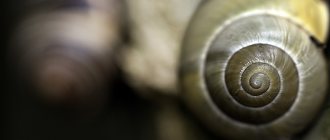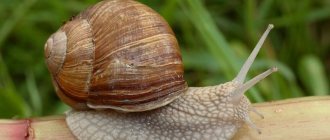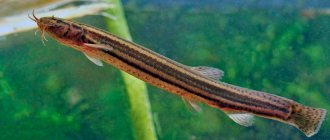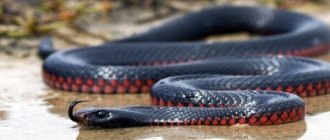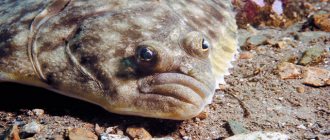The pearl barley mollusk owes its name, which reminds Russian-speaking people of the name of a well-known cereal, to a slightly less prosaic concept. Its origin is associated with the peculiarity of the inner surface of the shell and the English word perl - pearl. Mother of pearl covers the inside of the shell of a mollusk. The chemical composition of the substance and appearance are indeed similar to pearls. Painters used this property by mixing the crushed and processed substance into paints.
Pearl barley mollusk: origin
Actually, pearl barley (emphasis on the second syllable) or shells (also known as Unio in the Latin version) is the name given to a genus of freshwater mollusks of the bivalve class, the family Uniotidae (Latin name - Unionidae). They were isolated and described by scientists at the end of the 18th century.
The habitats of river mollusks of this genus are predominantly located on the Eurasian continent. In the central European part there are three types of pearl barley - thick, wedge-shaped and, of course, ordinary.
Age determination
The age of pearl barley can be determined in two ways.
The first is based on how many relief arcs encircle the shell valve, which are formed after wintering due to the suspension of the growth of the mollusk body. Only the relief stripes are counted, and it is easier to calculate how old a mollusk is by looking at the arched protrusions on the shell using the formula - the number of protrusions plus two.
The most common types of pearl barley
Unio crassus is one of the species of commonly found pearl barley mollusks, in Russian called thick pearl barley. It develops more slowly than the other two species.
Wedge-shaped or swollen pearl barley, also known as Unio tumidus, is distinguished by a more elongated shell shape, relatively light color and preference for running water with non-stony soil. The dorsal edge of the shell is located below the crown - it is flatter than the other two species. Lines of growth arrest are located frequently.
The painter's clam or common pearl barley (Latin name Unio pictorum) grows faster than its fellows. The shell is elliptical in shape, reminiscent of an egg. Growth rings are thin and graceful. The name refers to artists not only because of the characteristics of mother-of-pearl, but also due to the use of shell valves by painters as a palette.
The height of barley shells usually ranges from up to 3.5 centimeters, the length reaches a little more than seven, the largest - up to fifteen. However, there are abnormally large representatives with very large shells.
These representatives of the genus of freshwater inhabitants have thick valve walls, the outer layer is smooth with noticeable, although thin, growth rings indicating growth zones. Pearl barley mollusks live on average ten to fifteen years, but there are cases of more than twenty years of existence of representatives of the species of thick pearl barley.
As habitats, they prefer freshwater, clear water bodies with fast currents. Due to the pollution of many rivers and the decrease in the number of fish in them, the life of which is associated with the development of mollusk larvae, the number of pearl barley has been gradually declining since the 20th century. At the moment, thick pearl barley is threatened with complete extinction.
Pasture
My practice of using pearl pearls has developed in a unique way. In my youth, following the example of my elders, I often resorted to this bait when bottom fishing. I hooked a piece of the flesh of the shell leg onto one of the two hooks of a donkey with a heavy load and made a long cast. And the second option is, again, using a small piece of the leg on the hook of a light bottom rig (a wire rod with a float pulled several times higher than the working descent) for fishing a dozen or two from the shore. We came across bream, white bream, silver bream, roach, and less often - chub and perch.
Well, then in personal practice there came a period of dominance of lake fishing. As a result, the shell is a thing of the past. But it’s probably not for nothing that they say that history develops in a spiral.
Donks have returned to my life in a modern feeder version. As a result, the day came when I again remembered the mollusk that once gave good results. As a result, it again took a permanent place among other effective river baits. However, before talking about this practice, it would be correct to touch upon the issue of collecting and storing pearl barley. In fact, such fishing begins with these actions.
It’s great luck if there are a lot of pearl barley and they cluster close to the shore. I went ankle-deep into the river, collected the required amount, and I was ready to start. But this rarely happens, so mollusks most often have to be obtained from some depth. To do this, I undress and go into the water with a bucket.
I move the sole of one foot along the bottom, looking for the characteristic ridge. The mollusk does not bury itself completely and therefore is not difficult to feel. Next, you have to bend down and pull it out of the ground with your hand, putting it in a bucket. In general, nothing difficult if you set up in advance.
The next step is preparing the bait. To do this, you need to remove the insides of the clam from under the lids. A similar procedure is performed using a knife, which alternately cuts the closing muscles. As a result, the lids swing open freely, providing access to the filling (photo 5) .
When feeder fishing, I open the shells one at a time and take the next one only after the insides of the first are used up to ensure the freshness of the bait. I keep a supply of shells in a bucket filled with water. Taking into account the high summer temperatures, I change the water to fresh water several times during the day. You can do it even simpler by using a metal cage as a container. He pulled it out of the water, took out the shell and immersed it again in running water.
I again form the bait with a knife, cutting out strips from the rather dense leg of the mollusk and cutting them into several parts with an eye to the hook being used. I either move the hook tip slightly outward or hide it inside (photo 6) , but I do it so that it is not in the middle of the bait, but pecks at the very edge. Then, when hooking, the hook will instantly come out, preventing the fish from getting off. If a piece of pearl barley leg is held weakly, it can be pierced through several times (photo 7) .
Any other bait can be combined with a clam. Especially such as leeches, worms, various larvae. Both of them coexist in the same environment next to each other, so their joint presentation is common for fish. Another thing is that in such cases you will have to significantly reduce the piece of mollusk or increase the size of the hook. When fishing for bream and carp, it’s easier, but when tuning in to roach and silver bream, you need to be oriented in advance.
Experiments with a tandem of pearl barley and foam balls are substantiated. I respect this polymer for its attractive appearance and buoyancy to fish. He is both capable of seducing fish himself, and it is advantageous to present them with any other bait.
There are no fundamental differences in equipment for fishing with shellfish. However, if fishing is carried out near pearl barley colonies, leaders made from ordinary fishing line will cut shells very well, so it is more rational to change them to fluorocarbon ones. The latter have increased abrasion resistance and resistance to other mechanical damage. The length of the leash is determined by the type and activity of the fish. They can be either short (up to 10 cm when using polystyrene foam) or long, reaching a meter or more.
The bites of even small fish when fishing with pearl barley are expressive. No subtle shudders or twitches. The quivertip clearly arches and then pulsates intensely. The mollusk does not catch any obvious small change, which is good news.
Structure of pearl barley
All pearl barleys have hard, durable walls of two valves of relatively convex or flatter shells, painted in a range of colors from yellow-gray to almost black. The valves are connected by a horn-shaped elastic ligament, in front of which the apex is located. In most pearl barley, it is shifted to the front of the shell and protrudes above the dorsal edge of the shell. The edge of the shell, on which there is a well-defined ligament, is considered upper.
There are anterior and posterior closing muscles. The lock is pronounced, consists of teeth and grooves. The pearl barley mollusk has three leg muscle imprints. This term refers to the areas of attachment of muscles to the shell, the concept refers to the hard valves, and not to the soft body of the animal.
The shell of the mollusk is three-layered. The outer conchiolin is usually a dirty green tone, underneath it is white porcelain, then the inner one is pearlescent. The last two are formed by crystals of calcium carbonate. The color palette of the mother-of-pearl layer of the shell can vary from white to pinkish and bluish.
The mollusk has a body and a leg. The epidermis of pearl barley is glossy, smooth or superficially uneven. The body has folds. On the dorsal part there is a growth in which most of the internal organs are located. It is called the visceral sac. However, there are also cavities with liquid on the body. There is also a secondary cavity containing the heart and gonads.
The main fold located at the border of the leg and the sac is called the mantle. Its edges hang freely, merging only under the excretory siphon (upper).
The clam's foot is shaped like an ax or wedge. On both sides of the barley body there are two semi-gills, fused behind the leg. Each is a lattice plate through which water is continuously filtered. The gills are equipped with water tubes. There are two rudimentary openings-siphons - inlet (branchial) and outlet (cloacal). They are separated by a diaphragm.
The diet of barley mollusks is plankton and detritus (tiny, undecomposed organic particles). Nutrition occurs due to the filtration of water by particles remaining on the gills. They are covered with mucus and the cilia of the ciliated epithelium move to the mouth opening, then are swallowed by pearl barley.
The digestive system is represented by three sections. At the base of the leg there is a mouth opening with two lobes on the sides, an oral cavity and a pharynx, but without grinding organs, which make up the foregut. From there, the esophagus leads to the stomach, which is surrounded on all sides by the liver, the digestive gland of the pearl barley. The midgut extends from the stomach and bends several times. The food then enters the hindgut.
Unused or processed substances are discharged out along with filtered water through the cloacal cavity. In an animal 7-8 centimeters long, the jet can be thrown out over a distance of forty centimeters.
The nervous system is represented by three pairs of nerve nodes (ganglia) - head, leg and splanchnic, connected by commissural nerve fibers. Nerves extend from the ganglia to the organs.
Perlovitsa are equipped with skin sensitivity receptors, organs of balance and chemical sense. The latter surround the oral cavity and opening. Hearing is almost undeveloped - two auditory vesicles are located on the foot ganglia. There is no vision.
The circulatory system is represented by a three-chambered heart (two atria and one ventricle) and vessels - arterial and venous. Part of the mollusk's open circulatory system passes through the cavities of its body. Gills are also included in the process.
Description
The Perlovitsa snail is quite large, its length reaches 10 cm, and its shell height is 3.5 cm. Even larger individuals are also found. These inhabitants of freshwater bodies have thick shell flaps. The external structure of the pearl barley allows it to withstand large external loads, although the outer layer of the shells is smooth, with rings that indicate the growth zones of the mollusk inside the shell.
The shell has convex three-layer doors, thanks to which it appears oval. The outer layer is made of conchiolin (horn-like organic substance). Typically, it has a dirty green color. Under the outer layer there is a second one, white porcelain in color. The third internal one is mother-of-pearl. The inner layer can be white or with tints of pink and blue.
The average lifespan of pearl barley mollusks is 10-15 years. There are cases when individual specimens live up to 20.
In the upper part of the shell there is an entrance hole for the body of the mollusk. Through it, it feeds and receives oxygen through the flow of water. Through the second outlet, the pearl barley gets rid of waste products.
The body of the mollusk consists of the body itself and legs. He moves, releasing his leg from the shell. The body has two pairs of muscles that tightly lock the shell valves. If a mollusk senses danger, it uses these muscles to close the valves so tightly that neither predatory fish nor crayfish can open it.
Mollusks are sedentary creatures, but they move well along the bottom of reservoirs and move through the water column. Mollusks have no organs of vision, and hearing is practically absent.
Features of movement
Pearl barleys move by slowly crawling exclusively on horizontal surfaces, at a speed of one to one and a half meters per hour, half immersed in sand or silt. The mollusk first buries itself into it with its front part, taking a vertical position for this. May not move for days until sunny weather sets in. During rest, it lies buried in the ground with its entire body, except for the upper edge with the mouth opening.
When moving, the leg moves forward (this depends on the moment of blood flow into it), and the whole body is pulled towards it. The contraction of the muscles causes the leg to retract and complete its stroke cycle—a step it takes approximately every fifty seconds.
At the end of summer, closer to the beginning of autumn, the mollusks bury themselves almost entirely in the silt for wintering. They reduce the activity of life processes to a minimum and plunge into a state of torpor, tightly and tightly closing the shell valves.
Nutrition
Pearl barleys eat detritus (products of undecomposed organisms) and feed on plankton. The process of absorption of nutrients occurs through the ingestion of small particles that fall from the water onto the gills. These particles are enveloped in mucus and gradually move towards the mouth. The mollusk then swallows the food. And through the cloacal cavity, the mollusk removes processed food. The mollusk, which is about 8 cm long, can throw out its waste in a stream at a distance of up to 40 cm.
Females, males and glochidia: reproduction and development of pearl barley
Mollusks are heterosexual. There are gonads, but no copulatory organs for internal fertilization. They breed in the spring - starting at the end of April and throughout May.
Through the excretory siphon, the male sends sperm into the reservoir, and from there they enter the female’s body through the entrance siphon, where they fertilize the eggs. Several hundred thousand eggs can appear from one female at a time. The development of embryos occurs in the external hemigills of the female.
The larvae of freshwater mollusks have a special name - glochidia. They reach maturity and are ready to separate from the mother's body 20-40 days after fertilization - from the end of May to August. For the first days (usually no more than three), the larvae swim in the water, and after that they attach to the gills, skin or fins of fish and parasitize them, developing and thus spreading throughout water bodies.
Pearl barley reaches sexual maturity after two to three years of life.
The age of mollusks is determined in two ways. The first is based on the number of annual growth arcs encircling the entire valve. Only relief stripes are taken into account. They arise as a result of the growth process stopping during wintering.
You can check the result of the inspection by counting the arc-like protrusions on the inner surface of the valve near the blunt end of the shell. The age is calculated using the formula: the number of these pearlescent deposits plus two.
About bait and bait
Feeder fishing involves systematic feeding of the casting sector. When planning to use pearl barley meat as bait, it should be made an integral component of the nutritional mass. To do this, you need to crush a dozen or two shells, chop their contents and mix them with ordinary soil or dry factory bait without a strong odor - for example, winter bait (photo .
.
No attractants should be added. The second option is when the complementary food is mixed independently, and a portion of the cut insides of the shell is added to each feeder. Well, the third is the preparation of a nutritious mass from only crushed shells. Which one is better to adhere to is an individual question. I'm leaning towards the first option. It produces attractive turbidity and delivers the collected food to the fishing point in sufficient quantity. Great combination.
By the way, the mantles and gills of mollusks opened to prepare bait will not stay on the hooks, so if unnecessary, they can also be used as part of bait. And one more thing: in case of coarse grinding of shells, it is worth taking feeders that are more capacious.
It has been proven by experienced people that when fishing with pearl barley, hooking fish has a good effect. Alas, this method has also become rare today. True, not everywhere. Experienced fishermen with experience know a lot about this and therefore are not lazy to spend time on thorough preparation for fishing. They accustom fish to a certain type of food and its constant presence in specific places. Over the course of several days, shells are collected, crushed with stones, and then thrown into the water with “cobras,” “ladles,” and “spoons.” Less often they are dumped out of buckets and delivered to casting points on boats.
An interesting fact is that the natural habitat of living pearl barley is a kind of hint regarding the choice of a potentially promising river area for fishing. As noted above, the mollusk does not favor oxygen-depleted warm water. Therefore, near places where it accumulates, there are often underwater springs, streams flowing into the water, and river tributaries. In the hot season, fish also prefer similar conditions and stay there, while at the same time relying on shell rock as a potential food.
The role of pearl barley in the life of a natural reservoir
Perlovits can be found both in flowing reservoirs and in ponds and lakes. They live in shallow and deep waters. The most preferred soil for pearl barley is sandy, silty or mixed. They can settle on a rocky bottom with the presence of a layer of silt, but they avoid viscous ones. Traces of mollusks on a soft bottom are noticeable and recognizable, resembling grooves.
An important factor in the presence of pearl barley is good oxygen saturation of the water.
They are natural and excellent water filters; a large individual passes about forty liters through itself every day. Considering the number of mollusks in water bodies, their role in this process is difficult to overestimate.
Pearl barley also has a binding and compacting effect on the sludge, since each one secretes a very large volume of mucus.
Fishing with pearl barley
The river shell is also useful for fishing enthusiasts. Fishing for pearl barley is going well.
Carp, crucian carp, rudd, catfish, burbot, bream, pike, roach and perch love river mollusks.
- In combination with the cockchafer and river cucumber, it also makes an excellent bait. The shell can be used in combination with maggots and worms.
- Before you go fishing, stock up on river cucumber, open the shell and simply place the pearl barley on the hook.
- It is worth noting that river shells are suitable for fishing even when fried or rotten.
- Fishing for river cucumber is considered successful only in those places where it lives.
Experienced fishermen recommend a dough recipe with pearl barley for bait. You will need fresh white pearl barley. It is steamed or boiled, supplemented with special activators. In addition to the contents of the shell you will need:
- A glass of cereal.
- Up to 6 glasses of water.
Pour into a saucepan and add liquid. No need to add salt. Salt is not typical for the river ecosystem. It will only scare away the catch. Cook in boiling water for up to one hour, stirring. Then put the pan in a warm place for 7 hours. Take it out and mix it with fresh river cucumber.
What types of bivalves are there?
Tridacna. Pearl mussels. Oysters. Scallops. Mussels
- Bivalve - marine and freshwater molluscs, which are characterized by the absence of a head, the presence of a wedge-shaped burrowing leg and the presence of a shell consisting of two valves. ...
- Giant tridacna (Tridacna gigas) is the largest species of bivalve molluscs (Fig.
Interesting materials:
How to make multi-level lists in Word? How to become a moderator on a stream? How to make a grave in Sims 4? How to make moss for snails? How to make a chocolate mold with your own hands? How to make molds for chocolate? How to make milk foam without a Cappuccino Maker? How to make ground oatmeal? How to make sea bath salt? How to make soap bubbles without glycerin?
